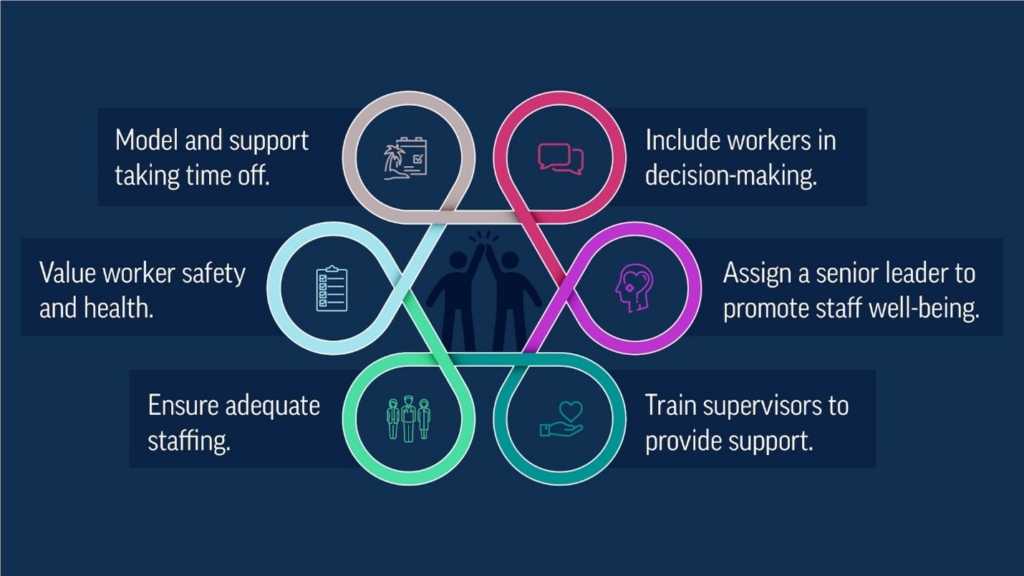Supporting Caregivers: Key Strategies to Tackle Burnout

Healthcare burnout was prevalent before the pandemic; however, the pandemic has accelerated the mental health and burnout crisis. Not only are healthcare workers feeling the strain, but the communities they serve are also impacted. Staffing shortages are becoming all too common across the health systems in hospitals, primary care clinics, and public health departments.
As the healthcare burnout and mental health crisis continues, it will affect the public’s ability to get the routine and emergency care they need (Addressing Health Worker Burnout). The continued burnout will also lead to increasing costs to healthcare, worsen health disparities and hinder the ability to prepare for the next public health emergency.
The Alarming State of Health Worker Mental Health
According to a Vital Signs report by the CDC, there’s been a rise in mental health issues among healthcare workers. The analysis from the CDC Quality of Worklife survey focused on well-being and working conditions, comparing data from 2018 to 2022, highlights a worrying trend: burnout rates among healthcare workers jumped from 32% in 2018 to 46% in 2022. In comparison, other essential workers and the broader workforce saw stable burnout levels over the same time period.
Equally concerning is the increase in healthcare workers considering leaving their jobs. In 2022, the percentage of healthcare workers who intended on looking for a new job increased to 44% up from 33% in 2018. The percentage of other essential workers and all other workers who intended to look for a new job decreased (Health Workers Face a Mental Health Crisis).
Strategies to Combat Healthcare Burnout
Reducing burnout in healthcare is crucial for both the well-being of healthcare workers and the quality of patient care. Here are some strategies that can help:
1. Promote Proactive Self-Care: Encourage healthcare workers to prioritize self-care activities such as exercise, mindfulness, and adequate rest. Institutions can support this by offering wellness programs and resources.
2. Address Stressors: Identify and mitigate sources of stress in the workplace, such as heavy workloads, long hours, and inadequate resources. Efficient scheduling and workload management systems can make a big difference.
3. Create a Harassment-Free Environment: Foster a culture of respect with zero tolerance for harassment or discrimination. Provide clear policies and procedures for reporting and addressing such issues.

4. Supportive Workplace Culture: Build a supportive environment where colleagues can openly discuss challenges and provide mutual support. Encourage teamwork and camaraderie among staff members.
5. Advocate for Change: Work together to advocate for changes in policies and practices that reduce burnout, such as realistic work assignments or adequate staffing levels. Engage with leadership to address these issues.
6. Training and Education: Provide training on stress management, resilience, and coping strategies. Equip healthcare workers with the skills they need to manage stress effectively.
By implementing these strategies and fostering a collaborative approach, healthcare organizations can make significant strides in reducing burnout and promoting a healthier workplace for their workforce.
Cited Articles:
Health Workers Face a Mental Health Crisis








